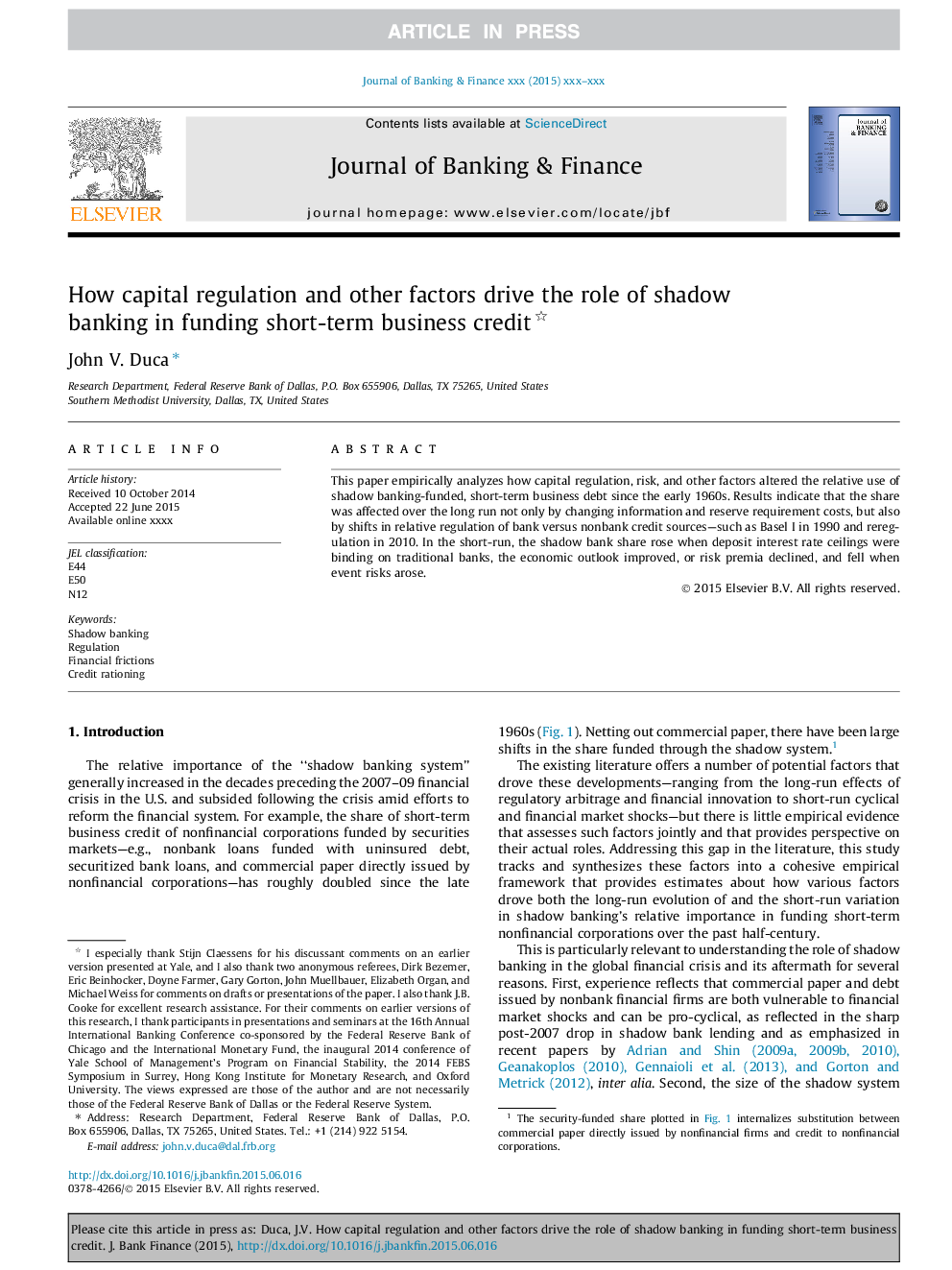| Article ID | Journal | Published Year | Pages | File Type |
|---|---|---|---|---|
| 5088304 | Journal of Banking & Finance | 2016 | 15 Pages |
Abstract
This paper empirically analyzes how capital regulation, risk, and other factors altered the relative use of shadow banking-funded, short-term business debt since the early 1960s. Results indicate that the share was affected over the long run not only by changing information and reserve requirement costs, but also by shifts in relative regulation of bank versus nonbank credit sources-such as Basel I in 1990 and reregulation in 2010. In the short-run, the shadow bank share rose when deposit interest rate ceilings were binding on traditional banks, the economic outlook improved, or risk premia declined, and fell when event risks arose.
Related Topics
Social Sciences and Humanities
Economics, Econometrics and Finance
Economics and Econometrics
Authors
John V. Duca,
